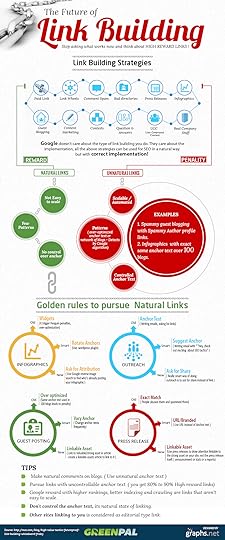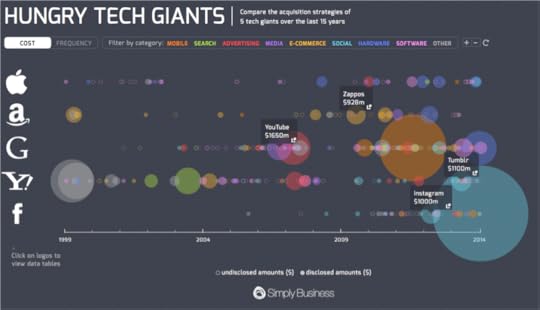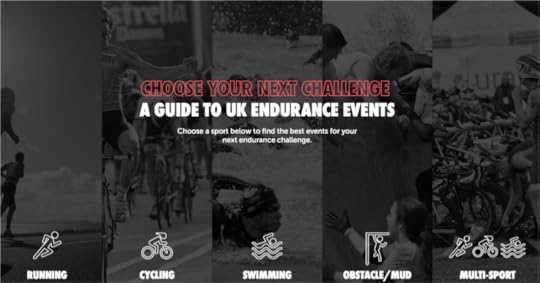Erik Qualman's Blog, page 606
April 7, 2014
Report: Only 3% of Business Sites Are Optimized for Social Media Mobile Usage

Now that 58 percent of American adults use smartphones, it’s critical for brands in every industry to keep mobile users – a large contingent of which are social media users – in mind while developing their websites. This is because an increase in mobile use equals an increase in web browsing – and these rates are steadily growing.
The rise of mobile is fueled by the rise of social media, and an increasing number of social media users are accessing their social media profiles from their mobile devices. As they click on outbound links to destination websites, they’re being exposed more and more to publishers’ mobile website versions. This is leaving many publishers caught without being prepared for an influx of mobile-based users, who are finding websites difficult to navigate from a mobile device.
The problem is widespread; only 3 percent of business sites are fully optimized for fast and easy mobile usage. Furthermore, only 15 percent of all websites are fully responsive, which means that no redirection is required for use on mobile devices. Responsive design is one of the top web design trends for 2014, and is being emphasized across various industries.
To be fair, optimization for mobile devices is a challenging process, particularly when there’s a large amount of content to work with. It’s certainly worth the trouble, however. For a clearer understanding of the impact of mobile optimization, take a look at the following statistics:
One quarter of all mobile users access the web from their devices every day.
For businesses that rely solely on ecommerce, mobile sites can increase customer activity by 85 percent.
Online consumers are 51 percent more likely to make a purchase from a business that has a mobile site.
It’s generally more efficient to create a mobile-friendly site than to attempt to redesign one. A separate mobile site can have few pages with very basic navigation options. These are just some of the factors to consider when deciding whether to redesign an existing site or construct a simplistic, mobile-friendly one.
Analytics. This data will differentiate between the ways mobile users and desktop users interact with the site.
Assessments. Once website use has been analyzed, it’s necessary to assess the content. Think about landing pages – are users reaching the most appropriate locations, or is it possible that they are not finding what they’re looking for? Think, too, about conversion rates. What obstacles might be in the way of their growth?
User purpose. If users are likely to connect to a page for purposes of obtaining a phone number or driving directions, for instance, mobile features will allow them to make automatic calls or to gather information based on geolocation.
There are a multitude of resources available that provide suggestions and information regarding best practices for mobile optimization, some of which are listed here. Thinking about these factors will provide you with new ideas, greater momentum, and a clearer vision of your mobile site.
Branding elements. Similarities, such as language, colors, icons, and logos between your standard and mobile sites will give users a sense of continuity and comfort.
Emails. Although email is not directly related to mobile optimization, is bears enough significance to business practices to make it worth considering. Perhaps email drip campaigns are an integral part of a business’s marketing strategy, for instance. Nearly half of all emails are accessed from mobile devices, and they will likely be deleted immediately if they are not optimized. Think about it – investing in responsive email templates may be worthwhile.
White space. Things are a lot smaller on the screen of a smartphone. For ease of use, it’s crucial not to squeeze an abundance of information into the mobile site. Furthermore, clicking intended links is much more successful when there is significant space between them.
Professional assistance. Although this sort of optimization is not overly complex, it’s unwise to dive into such an undertaking without reliable, professional guidance.
Apps
In addition to an optimized mobile site, the utilization of an app for a business or organization may be a savvy move. While there are goals and a budget to consider, the use of an app can prove rather beneficial. When appropriately employed, it can garner increased brand awareness and solidify consumers’ trust in a brand.
Apps do not even need to be available to consumers for them to be beneficial. They can be designed for use by company employees only, for example, for purposes of scheduling or tracking inventory.
Ultimately, there’s no doubt that business services, products, and other relevant information should be not only available, but easily accessible, on mobile devices. Smartphones and similar electronics are more mainstream than ever, and the ability to maintain a credible presence in accordance with their capabilities is pivotal to future success.
Thumbnail: http://tinyurl.com/ljuupo7
[image error]
April 5, 2014
Double Your Facebook Likes Easily! [Infographic]
Some of The Coolest Technology in Cars

As technology develops some of the most advanced technology is being implemented into car models.…
Car that changes colour with mood
Always find it difficult to select an exterior car colour when choosing your next car? Well now you don’t have to make the decision and settle with one colour as the Peugeot RCZ model changes colour with your mood.
It’s all down to some very advanced scientific technology. By using a specially developed coating, it’s able to alter the molecular structure of the paint to emit light at varying wavelengths changing the colour of the car to reflect how the driver is feeling. Heat reactive sensors are built into the steering wheel which read the driver’s body temperature to estimate their mood and then changes the colour of the car accordingly. Want a demonstration? Watch this video here to see just how cool this technology really is.
Disappearing Car Door
It may seem a little unnecessary and something that has been invented for lazy people, but whether you want to admit it or not, a disappearing car door is pretty cool. One thing’s for sure, you will definitely get some attention when you turn up to somewhere in a car that has disappearing doors. But believe it or not, it has more advantages than you initially might think. Whether you are always trying to squeeze out of the car door without bashing the car parked next to you or always struggling to clamber in the back of the car to get your child out of their car seat, you won’t have these problems with a car with disappearing doors. And convenience isn’t the only advantage, it is also great in terms of safety, for example access to drivers and passengers and/or their escape is greatly enhanced in serious crash situations. To see the disappearing doors work, click here.
In car apps
With the growth of smartphone ownership and ever increasing interest in social media, we knew it wouldn’t be long until our cars could feature their own apps. For instance Toyota’s Entune includes built in apps that stream data through a smart phone. All you have to do is download the Entune mobile app to your phone and using your phones data plan, Bluetooth and wireless technology, Entune connects you to a variety of in-car applications, whether this may be searching the web with voice recognition, listening to internet radio, making restaurant reservations or checking the traffic and weather as you drive. Lots of car models have similar features these days and they are continually evolving, so if you’re looking for your next car make sure you get a thorough explanation of what’s available with any model that you are considering.
Hands free entry
Hands free entry allows you to unlock the car door without having to remove your keys from your pocket or purse because it features a sensor that detects when the key it close to the car. Okay so your opinion may be that this is also a little lazy, but it’s great for those times when your hands are full or when you’re in a rush and your car keys are buried at the bottom of your bag.
Heated steering wheels
Might not be the most exciting piece of technology that cars these days have to offer, but a heated steering wheel is certainly a nice luxury on a cold morning drive. What’s even better is that they have become more available for drivers shopping for more mainstream cars that don’t have an enormous price tag, including the Ford Fusion and Kia Forte.
What are the costs?
It’s safe to say that owning a car with some of the coolest technology doesn’t come cheap, but at the same time it doesn’t necessarily mean that you have to be a millionaire to own a car with some awesome gadgets. You may be surprised at just how many models there are available that feature some pretty cool technology that are very much affordable. What’s more, there are plenty of options available to buy the model you want for a smaller price tag or to pay for a car without having to pay a massive amount in one go. For instance, going through a car dealer can often be a lot cheaper than buying directly from the car brand manufacturer. Furthermore, car finance is a great option to use. Credo Asset Finance, who offer Car finance in Norwich, are just one example who can provide you with the car of your choice for affordable monthly payments.
Thumbnail: http://tinyurl.com/ods6v9d
[image error]
April 2, 2014
3 Ways To Use Social Media To Land Your Dream Job

 In the summer of last year, a marketing executive at Enterasys announced that he was looking to hire for a social and digital marketing position. Most employers would have provided an email address for potential candidates to send their resume to; most would have asked for a covering letter and references. However, this particular executive, Vala Afshar, had a different idea in mind to help him decide who has capable for the job: he only considered candidates who made contact via Twitter. He later said: “The web is your curriculum vitae and social networks are your mass references.”
In the summer of last year, a marketing executive at Enterasys announced that he was looking to hire for a social and digital marketing position. Most employers would have provided an email address for potential candidates to send their resume to; most would have asked for a covering letter and references. However, this particular executive, Vala Afshar, had a different idea in mind to help him decide who has capable for the job: he only considered candidates who made contact via Twitter. He later said: “The web is your curriculum vitae and social networks are your mass references.”
Asking candidates to use social media to apply for a job is still an unusual recruiting practice. It’s not something that is going to become commonplace for at least a few more years. However, this story about Vala Afshar and his company does signify an enormous trend in the job market: recruiters are paying a lot of attention to what you do on social media. 54% of employers are searching the likes of Twitter for potential recruitment and 15% have hired through it as well.
If you’re looking for your perfect job, making sure your Twitter profile looks outstanding to employers is one of the most important things you should be doing. It’s an often overlooked component of landing a job and something that, for many professions, is far more beneficial that scouring job sites or phoning the likes of the ESA contact number. Here are five simple ways your social media presence can land you your dream job.
1.Follow Decision Makers And The People They Interact With
Alexis C. Madrigal wrote in The Atlantic last summer, not long after Vala Afshar’s aforementioned stunt, that he had hired a new writer for the website based solely on his social media presence. The person in question, Robinson Meyer, was a passionate tech blogger who started freelancing for the site and eventually followed Alexis and many of his colleagues. Alexis noticed him engaging in interesting, polite debates with his community. Soon, they began to talk too and Alexis eventually started reading Robinson’s work. He was so impressed with what he saw that as soon as Robinson graduated from college, Alexis offered him a position at the site.
Your dream job may not be a staff technology writer, but the moral of the story is universal. Employers are constantly hunting for new talent to add to their teams, and if you can follow people within their field on Twitter and show that you are equally as passionate about it as they are, you are inevitably going to land on someone’s radar. As they say, it’s not always about what you know so much as who you know. But what happens once you do catch someone’s eye is just as important, which leads us on to…
2.Have A Good Personality
The personality that you have on social media is just as important as the experience you demonstrate. You might have all the skills necessary to land your dream job, but if you’re confrontational with your followers or persist on just posting links to your work you aren’t going to get very far. Instead, show your personality and your sense of humor. Be friendly with the people you’re engaging with, and don’t be afraid to open up and share amusing stories from your everyday life.
There are a few notable instances that prove the power of personality. The digital marketing manager for Fundable, Janeesa Hollingshead, apparently landed her job after a Twitter conversation with Fundable about her favorite author. Meanwhile, the film critic David Ehrlich bounced back on his feet after losing his job at Film.com thanks his comedic take on the situation. For instance, he live-tweeted how the taxi taking him home on his last day was pulled over by the police. His amusing tweets caught the attention of The Dissolve where he has been writing ever since. Both of these stories signify that talent only goes so far; employers are also looking for someone who is entertaining, friendly and most of all genuine.
3. Don’t Be Afraid To Approach An Employer
Your dream employer might be impressed with what you have been tweeting about. They may be blown away by your enthusiasm for a particular field. They may be staggered by the experience you have demonstrated. However, there’s no way of them knowing that you’re interested in working for them unless you can show it. Don’t be afraid, therefore, to approach a recruiter and politely express your interest in working for them.
You can offer your services to their company or simply present something they might be interested in and ask for feedback. This is precisely what Jade Craven did. She would regularly offer some project ideas to Sam Mutimer from Think Tank Social over Direct Message and later landed a part-time job working on one of her projects.
Thumbnail: http://tinyurl.com/o9ep96d
[image error]
The Crafty Way to Use Social Media

There was a time when a new social media platform would simply replace its predecessor, but at present there are numerous sites all sharing the same user base. This would lead many businesses to believe that they need to be visible on all of them in order to maximise the impressions they leave on their target market. The question is should a business use their resources to achieve this blanket coverage or are there certain sites that are far more suited to certain industries?
Social Media Sites
Facebook and Twitter might be two of the most recognisable sites for the masses but the popularity of Pinterest is undeniable. With around 75 million accounts it’s in the top 5 in terms of size and has achieved its success despite not focusing on the mass audience.
It uses a scrapbook format that imitates the real world process of collecting images and ideas, storing them in various categories on your profile to draw inspiration for projects and to reflect personal tastes. By storing these images you are allowing others to view and ‘Pin’ images they like, storing them on their own profile.
Statistics gathered by DMR show that Pinterest’s key demographics are women, dominating male users 5:1. There is also evidence showing that it is a more popular social platform than twitter and Instagram amongst people aged 18+ and that unlike previously stated, Pinterest is a far more independent site with users less likely to have a presence on other social networks. The other important factor is that their users are wealthier with a higher percentage categorised in the top earning bracket. The merits of all of these factors make the site extremely appealing from a marketing perspective.
Exploiting your Niche
This is why it’s essential to know what social networking sites have to offer instead of simply setting up an account because apparently that’s what an organisation should do. Industries such as women’s fashion, Beauty and home décor can all benefit significantly from a site that accommodates these kinds of audience niches.
For example, Country Baskets, a leader in floristry supplies and craft materials believe that Pinterest is perfect for their customers. The intuitive nature of the site is extremely similar to the real world process undertaken by those who enjoy arts and crafts, a feature that hadn’t gone unnoticed when the company developed its social media strategy.
“We knew that in order to maintain social awareness it was essential to maximise our social presence. The way we’ve adopted the different sites is to utilise them for different purposes. Twitter is great for interacting with customers and Facebook allows us to promote events, products and content. However, our industry is extremely visually orientated and we felt there were better alternatives when it came to highlighting our brands identity to our audience. Pinterest allows us to maximise our users interactive engagement because they believe there is value in our knowledge of the arts and crafts industry, taking inspiration from the content we have on our profile.”
Country baskets haven’t abandoned the more prominent social networks as they do still have a purpose for the brand but they understand where they can prosper in a social media environment saturated with content. What shouldn’t be underestimated is the time it can take to build an audience and if a site isn’t offering value to users it can be extremely difficult to cultivate growth. By all means companies should be willing to try to build their social media presence but if it feels unnatural they should also not be afraid to abandon their efforts and focus on those that are resulting in interactions.
Thumbnail: http://tinyurl.com/ms3sfsx
[image error]
April 1, 2014
Machine Learning: Pioneering Social Media Software Helps Businesses Find New Customers in the Mass Universe of Tweets

Machines can’t think like humans can. Nor can they learn the way we do. But thanks to a branch of artificial intelligence that HipLogiq is using, computers can improve at certain jobs on their own, without being explicitly programmed.
As a result, companies like ours can improve their customer service, which in HipLogiq’s case means helping companies better mine Twitter for customer prospects. Machine learning technology is what Netflix, Pandora and Amazon.com use to give customers timely, relevant offers.
The “machine learning” I’m describing involves computer programs that can get better at tasks when they’re exposed to new data, according to the reference web site WhatIs.com. The programs essentially look for patterns in information and then change their actions accordingly, WhatIs.com says.
At HipLogiq, we’re using a machine learning program called Joshua to parse out relevant tweets in certain geographic areas that companies like Papa John’s International and Dunkin’ Donuts can use to find new customers through Twitter. Joshua is what’s called an “algorithm,” meaning it solves a problem – mining for relevant tweets – through a limited number of steps.
The upshot is that Joshua helps us better find those needle-in-a-haystack tweets that companies want – the ones in which customers have expressed a strong desire or need for something that our clients can help with.
Like most machine learning programs, Joshua needs a little help from humans. HipLogiq lends him a hand first by running millions of tweets through filters that help ferret out ones that have a key word, such as “pizza.” We also toss out tweets with words we don’t want (such as “Papa John’s,” because that person is probably already a customer) and toss out anything with profanity.
Finally, we’re left with a relatively small pool of tweets that a human can go through to pick out the most relevant ones for, say, Papa John’s. Joshua will learn not only from which tweets we select – “I could really use a pizza” – but also from the ones we reject (“a neighbor kid called my son a ‘pizza face.’”)
Joshua essentially builds what we call a “characterization scale” to determine the relevancy of a given tweet. Within in as few as 140 tweets, Joshua’s ability to predict which tweets are relevant approaches 80 percent of its maximum.
After we’ve run Joshua, we recalibrate the software several times with more tweets that humans have vetted. In other words, we double-check to ensure it is making precise measurements – or, to put it another way, we see that the tweets it is flagging as relevant are, in fact, pertinent to what the client is seeking.
Our results speak for themselves. For one restaurant client, for instance, we’ve responded to roughly 580 Twitter conversations. That group, in turn, has produced nearly 1900 customers – a 3.25 to 1 relationship.
In other words, one relevant tweet generates 3.25 new customers, because the people to whom we’ve responded have told friends about the offers they’ve received.
Those results come from all of the techniques I’ve described – using keywords, geotargeting, filtering, machine learning and the rest. But the bottom line is that Joshua can make a marked difference in presenting relevant tweets to the customer.
And as time goes on, the technology will only get better at finding those needles in the Twitter haystack that our clients desire.

Social media marketing company HipLogiq pioneers machine learning to help businesses find new customers on Twitter.
[image error]
Integrate Social into your SEO strategy; the future of link building

Do you wear many hats as digital marketer? Perhaps you run social media campaigns and also SEO campaigns and you are spread thin across the two disciplines. SEO and link building by itself can exhaust one person’s bandwidth. There are only so many hours in a day.
I run into this problem myself, I am in charge of all things digital marketing related, inbound and outbound for our startup GreenPal. To make best use of my time and resources, I have found success in combining the efforts of my link building campaigns along with my social media campaigns. While studying various link building strategies, it became evident that Google is punishing traditional gamed and scaled link building, and rewarding natural link acquisition.
One of the only ways to attain natural links is through real company stuff known as “RCS”. Part of real company stuff is deploying a social media strategy that adds value to your fans and followers, and the best way to add value is to create interesting and informative content. This same content can be also used for link building outreach.
Whether it be with an illustration, an infographic, a how-to video, or market-research, that you already deploy to engage your social media audience, now it makes sense to double down and reutilize that same great content and conduct link building outreach for it as well.
Bottom line, these days it doesn’t make sense for social media and link building campaigns to be silo’d. If you are part of a large team, work in conjunction with your SEO counterparts to combine efforts on creating great content, as it can be deployed in both capacities. And if you’re a one man army like myself, now with the way Google is scoring link equity you can double dip and get a return on investment twice.
Getting quality links is no easy task, it takes great content that people find interesting and helpful. Check out this illustration I made spelling out link building strategies that will reward your site with domain authority, and the ones that will punish it.

The rules of proper Link building are always changing.
Thumbnail credit: http://tinyurl.com/loucek3

[image error]
March 31, 2014
Physical Fitness Industry Working Out with Social Media

 Boutique gyms and specialized workout spots are popping up between the big name gyms; the physical fitness industry is hot.
Boutique gyms and specialized workout spots are popping up between the big name gyms; the physical fitness industry is hot.
It’s not only hot for the businesses themselves, but also for those who work there. People want personal trainers, specialized fitness experts and places to go where they feel they are getting what they want and need, and what they’re paying for.
For both ends, the client and the business, social media plays a pretty heavy role in promotion and awareness, whether it’s yoga, spin or boot camp.
Having your physical fitness life linked to social media simply benefits all.
For clients
Word-of-mouth is a great way to learn about new gyms, special rates or trainer specials.
Link up to your favorites and follow them on Twitter and Facebook. You may find a month of free yoga somewhere or your favorite boot camp instructor teaching a class in the park.
You can also see where your “friends” like to go and try a new spot or class.
With so much fitness a la carte these days, it’s easy to try new classes or new genres, you just have to know where to go, and social media can be a big help there.
For instructors and trainers
Personal training is one of 3 good paying jobs in physical fitness.
If you can market yourself right, you can find some clients willing to pay big bucks for your time as a personal trainer. And marketing through social media is one of the best ways to do it.
Another high paying job is instructing classes, whether it’s yoga, boot camp, zumba, anything.
By marketing your instruction through social media, you never know who may hire you to come in and teach a group – think schools (kids or teachers), corporate wellness programs, maybe sports teams, or even neighborhood associations.
The more you get your name and qualifications out there, the more work you can get, and do it through social media!
For businesses
With so many smaller boutique gyms opening, like Orange Theory and The Bar Method, they need to get their names out alongside LA Fitness and Lifetime.
Social media can announce openings, specials, new classes; the list goes on. Social media is also a place where instructors can connect and find positions, friend referrals and “likes” can get clients free classes, or any number of other promotions can be accessed.
These days, it’s hard to find a business not active on social media.
Whether you want more information as a client, you want more work as a trainer or you want more business as a facility, jump into social media and get what you need.
Let your social media do some of the workout for you!
Photo credit: faqs.org
[image error]
March 27, 2014
5 Ways to Maximize Visual Content on Social Media

When I have initial consults with clients, their questions center around the logistics of social media, like, “How often should I post to Facebook?” and “How can I possibly say everything I need to in 140 characters?”
Don’t get me wrong — these are all important questions, and I’m happy when clients take the time to sort them out. But to me, they’re missing one key element: the visuals. In my opinion, the more relevant questions are, “How often should I post a photo/video to Facebook?” and “How can I say everything I want to say in an infographic?”
In other words, the visuals of marketing matter. Visual content drives engagement better than any other medium, and it allows us marketers to communicate complex messages in intuitive and interactive ways that get the user invested by making them a key part of creating their own experience. Visual content is also diverse, with a whole host of tools and strategies available. This helps keep our approach fresh and tailored to unique brands and hey, it’s also just fun.
So, how can you maximize your visual content on social media? Let’s take a look at these 5 key approaches.
1. Make Your Visuals DO Things
Flowchart infographics are a popular form of visual content, and it’s no wonder. With so many complex ideas to communicate, flowcharts make it much easier to quite literally follow logical causal lines. However, to stand out in a flooded field, consider doing something like this Dance Collaborations visual from Concert Hotels. Here, users can discover new music by clicking on each artist’s name, and they listen to new collaborations by pairing several of the suggested artists within the chart. It’s not hard to see how much more lively and interactive this makes the experience, with the user actively engaging with the piece. For Concert Hotels, a company that helps concert goers find hotels near their target venue, music is perfectly on-brand and helps establish the company’s passion and expertise in the area. What’s more, visitors are likely to click around the site once drawn into this fun tool.
2. Tour Your Users Through History
Sometimes, it seems that every other week one of the industry giants acquires a smaller company. But when you take a closer look at the numbers, each company has its tastes, and how much they’re willing to spend varies widely based on their stage of development.
The numbers are inherently interesting, but they’d still be a snooze if they were presented in an Excel file. Contrast that to this Hungry Tech Giants timeline from Simply Business, which allows visitors to sort acquisitions based on type (e.g. Search vs. Mobile acquisitions, and so forth), judge the amount of money spent based on the size of the circle and see how those acquisition patterns have changed over time. The colors and varying sizes make the timeline engaging, as does the interactive nature of the sorting tool. Altogether, this approach is fun and makes dry and potentially complex information interesting and discernible to the layperson, thereby garnering a high number of social media shares.
3. Visualize Data in Real Time
For similar reasons, it can be difficult to grasp which tech companies are pulling a profit and how quickly they’re growing given that the numbers are often on the level of billions. While anybody who is interested could simply pull up a few quarterly reports, it’s hard for a non-financial audience to understand what the numbers really mean, let alone to visualize the comparative growth of each company.
That is, unless they take a look at this visualization of tech revenue and profit, from WorldPayZinc. Just push play, and visitors can see how profit and revenue for each company grows per second. Visitors can also choose whether to view both profit and revenue or just one of the two so that they can make both intra- and inter-company comparisons. Naturally, this is far more engaging to watch than any other format, and it makes understanding the tech landscape much more intuitive. I, for one, hear so often about Facebook, I had no idea how small it would look against the likes of the far less “cool” Samsung. Who knew?
4. Provide a Decision Making Tool
Choices. They’re the blessing and the curse of modern existence. But for a company like Trainline, which guides customers to their ideal hotel, transportation and theater bookings, decisions are the stuff of everyday. The company’s excitement for their industry is demonstrated wonderfully in this interactive tool, “Choose Your Next Challenge: a Guide to UK Endurance Events.” Here, visitors can choose from such challenges such as “cycling” and “obstacle/mud,” and the tools suggests nearby events based on their zip code. This provides an engaging (and sly) demonstration of their core business capabilities, as it’s just another manifestation of what they do day to day but in a unique, surprising, helpful — and shareable — form.
5. Create Your Own Game
One of the chief hurdles for marketers to overcome today is that so many of their visitors get online to play games, meaning their attention span for marketing is next to none. But that can all change if the game is the marketing, as with Staples’ eReader Speed Reading test. Here, users get to test how fast they read and compare their speeds with friends, all on the mocked up platform of the device the company is looking to sell. Pretty neat, huh? While you may not have the budget for a game of this caliber, something as simple as a responsive microsite can be just as effective.
The Takeaway
There’s no doubt about it: visual content is the best way to get shared on social media and beyond. And when your marketing is shared, your website traffic goes up — and so do sales. How will you begin? Let us know in the comments below.
Thumbnail Credit: http://tinyurl.com/pv4ga9t
[image error]
5 Social Media Sites Our Business Must Use

 Perhaps you think social media is primarily for time wasting and posting pictures of your pet or your latest selfie.
Perhaps you think social media is primarily for time wasting and posting pictures of your pet or your latest selfie.
But did you know your existing customers have probably looked for you on their social media sites already? Customers who don’t know you exist (because you aren’t on there, you see) are out there right now, looking for your services. It’s time to join the party.
Read on to discover the top five social media sites your small business can’t live without…
Facebook is the popular kid of the social media world, with more than 1 billion users. Facebook is mostly used for sharing content, showing the world what you like, and providing regular updates. How can your business tap into Facebook’s social side?
Among the ways….
* Use your presence to make people aware of who you are and what you do;
* Give your fans a great offer, a witty commentary or an interesting photograph to share;
* Offer incentives for liking your page, such as a contest entry per like.
Facebook is a great place to have conversations with your customers. Come prepared to grab their attention and give them something they’ll want to talk about with their friends.
Twitter is a place to post updates of 140 characters or less, which your followers can see.
Twitter is a also a global conversation – you can tag your posts with “hash tags” to make sure others who are interested in the same topics can find you. How do you take advantage of Twitter’s haiku-like updates?
Among the options…
* Keep your tweets relevant and interesting;
* Join in with conversations for better networking;
* Make tweets that point back to your website to drive traffic.
Twitter is part global network, part intimate conversation and part promotion. Come prepared to contribute to relevant conversations.
LinkedIn is a dedicated business networking site.
Your LinkedIn profile is a professional resume where you can list your work, education, experience, awards and a detailed biography. With 2 new members every second, LinkedIn is a serious resource for small businesses. How can your small business network effectively on LinkedIn?
Among the things to remember…
* Be yourself – remember, people want to connect with you, not your accolades;
* Found or join groups in your area of expertise to get the most out of connecting with others in your field;
* Update your LinkedIn profile regularly so visitors will know you are active.
LinkedIn is like the biggest networking event on the planet. Come prepared to talk about what you do and engage others.
Google +
Google + is social networking with a competitive edge – your Google + activity is picked up and indexed by their search engine, which can boost your Google rankings.
Google + features hashtags too, to make it easy for others to find your posts, along with dedicated hangouts for people with common interests. How do you find the best places to be on Google +?
Remember to…
* Make your updates relevant to your product or service;
* Be patient – take your time searching out people in your field or who are interested in what you do;
* Keep active – regular activity will help the search engines to find you.
Google + is a serious way to build your business presence online. Come prepared to start conversations and seek out people who are interested in what you do.
YouTube
With 3 billion hits daily, a YouTube presence can provide a great boost to your business.
Videos give customers a sense of having a face to face interaction with you, and can be used to drive traffic to your site. How do you persuade viewers to like and follow your channel?
Keep in mind…
* Make your videos informative or interesting, such as a how-to or testimonial;
* End your video with a clear reason to click through to your site, and provide your link;
* Add new videos every so often to keep people’s interest.
YouTube is a great tool for adding a personal, visual element to your online presence. Come prepared to offer viewers something of value to ensure they watch to the end and click your link.
Social networks are a vital part of your marketing strategy whether you sell real estate, advertising, financial software, products for the home and much more.
Get started today – create some profiles, fill out your information, and take a little time to learn how each network functions. You’ll be glad you did.
Photo credit: searchengineland.com
[image error]










